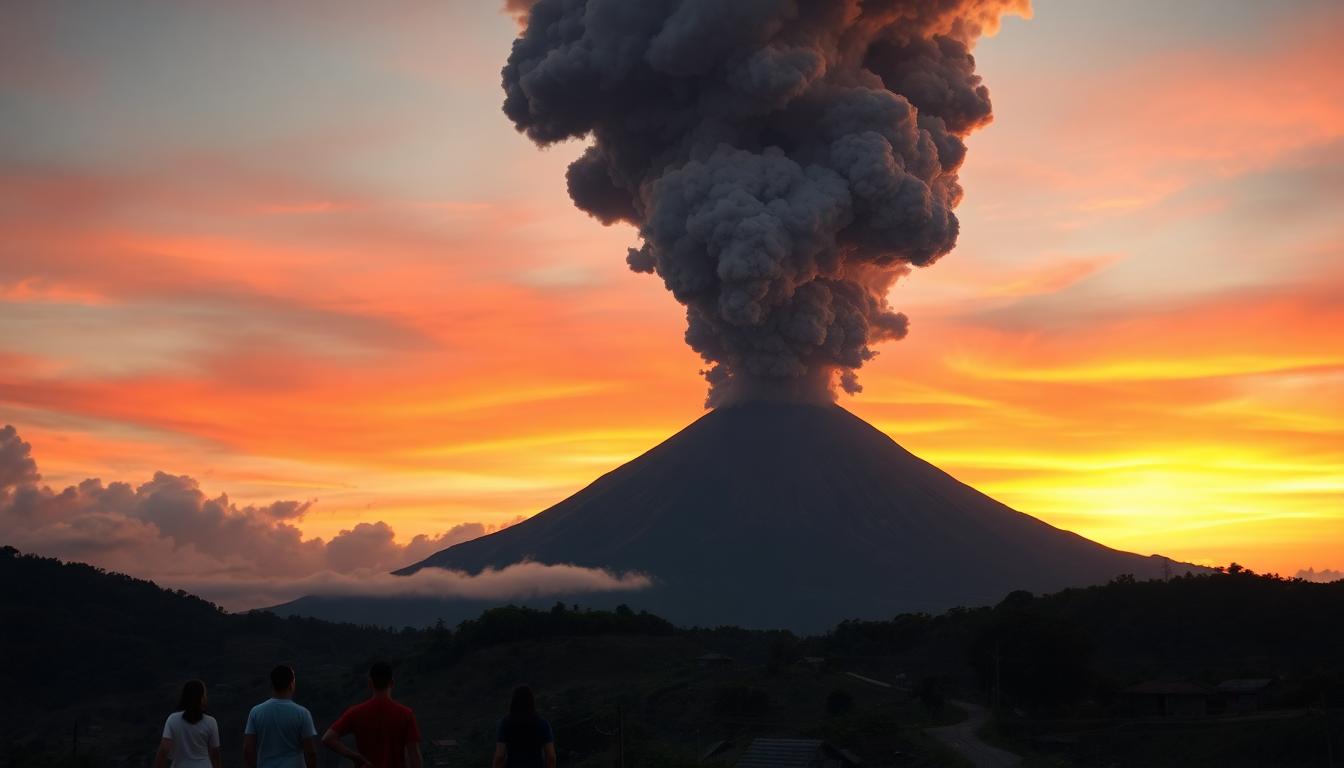Table of Contents
Mount Lewotobi Laki-laki in south-central Indonesia has made headlines recently with its dramatic eruption, raising alarm among both local authorities and residents. Imagine seeing towering columns of hot ash shooting up to 10,000 meters (32,800 feet) into the sky—pretty intense, right? The Indonesian Geological Agency has reported this impressive spectacle, leading officials to crank up the alert level to its highest point and expand the danger zone to an eight-kilometer (five-mile) radius around the crater.
This response highlights just how serious volcanic eruptions can be in a region that’s no stranger to seismic activity.
The Impact of Volcanic Activity
The eruption created a mushroom-shaped cloud of ash that was visible from as far as 150 kilometers (93 miles) away.
Fortunately, there have been no immediate reports of damage or injuries, which is a relief. However, residents are being urged to stay alert, especially since heavy rainfall could trigger lava flows in nearby rivers. Given that this area has a history of eruptions—including a devastating one last November that sadly claimed nine lives—this warning can’t be taken lightly.
As the situation unfolds, authorities are keeping a close eye on the volcano to ensure the community stays informed and prepared for any further eruptions. It’s not just about the immediate dangers; volcanic eruptions can also have long-term environmental effects that need to be considered.
So, how can residents best protect themselves? That’s where proactive public safety measures come into play.
Indonesia’s Volcanic Landscape
Did you know that Indonesia is home to around 120 active volcanoes? It sits on the Pacific “Ring of Fire,” a hotspot for seismic and volcanic activity.
With a population of about 270 million, the challenges posed by this geological landscape are unique. The twin volcanoes of Lewotobi—Laki-laki (which means “man”) and Perempuan (“woman”)—illustrate the complex relationship between nature and the communities that live nearby.
Living close to active volcanoes comes with its own set of risks, especially when you factor in Indonesia’s climate. Heavy rainfall can make volcanic hazards even worse. That’s why understanding risk management and being prepared for emergencies is so crucial. Authorities have the dual responsibility of monitoring volcanic activities and equipping residents with the knowledge they need to stay safe in case of future eruptions. Isn’t that a big responsibility?
Looking Ahead for Mount Lewotobi Laki-laki
As the situation around Mount Lewotobi Laki-laki continues to evolve, it’s vital for both officials and residents to stay alert. Being prepared for potential future eruptions is key because the natural environment can be unpredictable. The current alert measures put in place by authorities show a commitment to public safety and reducing risks associated with volcanic activity.
In conclusion, the eruption of Mount Lewotobi Laki-laki serves as a powerful reminder of the natural forces at play in Indonesia. While immediate threats seem to be under control for now, ongoing vigilance and preparedness are essential for protecting the lives and livelihoods of those living in the shadow of this formidable volcano. So, how do you feel about living near such a powerful natural phenomenon? It’s certainly a thought-provoking situation!





